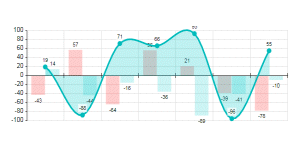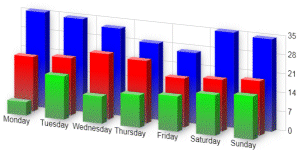
- #BAR GRAPH R SHINY MANUALS#
- #BAR GRAPH R SHINY PDF#
- #BAR GRAPH R SHINY CODE#
- #BAR GRAPH R SHINY DOWNLOAD#
Labs(title = "2- Most Downloaded R Packages", y="Number of Downloads", x="Package Name") +Ĭoord_flip() +theme_bw() +theme( = element_text(size = rel(1.4)) ) P2<-ggplot(reorderd_freq)+ geom_bar(aes(x=pkg_name, y=pkg_count), stat="identity", fill="purple1") + Reorderd_freq$pkg_name <- reorder(reorderd_freq$pkg_name, reorderd_freq$pkg_count) Theme_bw() +theme( = element_text(size = rel(1.8)) )
#BAR GRAPH R SHINY PDF#
Labs(title = "1- PDF of Numuer of Downloads of R Packages", x="Number of Downloads", y="") + P1<-ggplot(reorderd_freq, aes(x=pkg_count)) +geom_density(fill="lightblue")+ # be set by users through the slider widget
#BAR GRAPH R SHINY CODE#
# Here our code receives the number that will # This command sorts our input data based on number of downloads # Reads the input file from our working directory Input_data<- read.table("pkg_by_freq.txt", header = T) # behind the scene calculations and generates our plot # Here we define a server function that does The following is server code I developed to provide information on all the components of my plot.

The server provides information about calculations that need to be done behind the scenes and then plots and generates the graphics, defines the properties of table, and so on. # Creates a plot that will be placed in the main panel # structure of our main panel where we show our actual plots # The mainPanel command defines the size and layout Label = "2- Number of libraries in bar plot:", min = 3, max = 30, value = 10) Label = "1- Number of libraries in PDF plot:", min = 30, max = 1000, value = 30),

# The sliderInputs command allows us to define the range # define two slider bars to set different values # is through a slider widget, the following two lines # One of the popular ways to set a number # in R-Shiny, such as dropdown menus and date range inputs. # Users can have different types of widgets # Here we width and position of our object in the web app # R-Shiny such as sidebar layout, vertical layout and split layout # There are also other predefined layouts available in # that can be used to generate our layout # our layout column and offset commands are two of the popular arguments # The fluidRow command gives us the flexibility to define TitlePanel("Most Downloaded R Packages"), # Here we can define the main title of our web app # The fluidPage command translates R shiny codes to HTML format The following is a user interface script I created, in which I added some comments to explain what each part of the code does. We can instruct the model on the layout of our web app, the size of each component, the details of any slide bars or dropdown menus we want, and so forth. Let’s say we want a side bar that provides options for the user. The user interface part of our script divides the page into several components and defines the characteristics of each.
#BAR GRAPH R SHINY DOWNLOAD#
You can download the final post-processed file from here.

For example, this graph shows the first thirty packages. I post-processed the data so that the final file lists the packages by the number of times they were downloaded that day. This file has more than 3 million lines, corresponding to all the CRAN packages that were downloaded that day. To showcase some of the things you can create with R shiny, I downloaded the package download logs from Novemhere. Probably the best is Shiny’s original manual, available at here and here.
#BAR GRAPH R SHINY MANUALS#
Before I get into the details, I’ll note that there are several nice instruction manuals out there that you can refer to for more information. In other words, ui.R is equivalent to front-end development and server.R to the back-end part of the code. The server.R function is where calculations are done and graphs are generated. The ui.R function is used to create the graphical user interface I provide more details below. These functions can be in two separate R files or a single one. Shiny apps have two main functions: ui.R and sever.R. In the next two posts, I’ll provide more details on how the package can be used to create simple web apps. In this post, I cover some basics of R shiny and some guidelines to creating interactive plots with it. The interactive plots can contain graphs, maps, tables and other details you need on your site. It’s called shiny, and it can also be used to create websites with interactive user interfaces. In this blog post, I explain a helpful R package that you can use to create interactive plots and web applications.


 0 kommentar(er)
0 kommentar(er)
